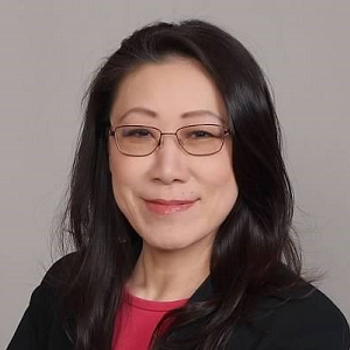
Dr Kenneth Shain Discusses the Evolution of Treatment for Newly Diagnosed Multiple Myeloma
For transplant-ineligible patients with newly diagnosed multiple myeloma, the evidence now supports the use of 3-drug regimens instead of 2-drug regimens.
In recent years, treatment of newly diagnosed multiple myeloma has evolved from 2-drug regimens to 3- or 4-drug regimens, all without adding undue toxicity to patients, explained Kenneth Shain, MD, PhD, associate member of the Departments of Malignant Hematology and Chemical Biology and Molecular Medicine, and codirector of the Pentecost Myeloma Research Center, H. Lee Moffitt Cancer Center.
In an interview with The American Journal of Managed Care® (AJMC®), Shain discussed treatment regimens for transplant-ineligible patients and the 2 pivotal trials that have provided the evidence supporting the current treatment paradigm.
In addition, he highlighted the individual patient and disease factors that have to be considered when making treatment decisions.
AJMC: What are the primary treatment goals when initiating therapy for newly diagnosed multiple myeloma, and how have these evolved over time?
Shain: One of the primary treatment goals when initiating therapy for a patient with newly diagnosed multiple myeloma is that you divide them into transplant-eligible and transplant-ineligible patients, because that does dictate the goals. We've evolved over the last couple decades from a “let's treat” to “control disease” mindset and, maybe secondarily, to get a deep response, but more importantly to control disease.
I think we're really evolving some excellent therapies that are very targeted, very safe, very well tolerated, and we can give 3- and 4-drug combinations without adding undue toxicity to our patients. Therefore, the goals of therapy really have evolved to try to maximize the response (ie, the depth of response). We think that for the vast majority of patients that depth of response really translates to longer control of disease. I think that's maybe the biggest evolution: moving from 2- or 3-drug combinations to 3- or 4-drug combinations. And, again, historically from not the most intelligent therapies to really myeloma-directed therapies.
AJMC: For transplant-ineligible newly diagnosed multiple myeloma patients, what are the current standard frontline regimens, and what pivotal trial evidence supports their use?
Shain: We've evolved from 2- and 3-drug combinations because of really important studies over the last several years, one being the
More recently, there has been data of VRd versus daratumumab (Darzalex), lenalidomide, and dexamethasone (DRd) in the
Those are the 2 pivotal studies that have changed how we take care of patients in the newly diagnosed setting in the United States. There have been other excellent studies outside the United States, where we’re adding monoclonal antibodies to standards of care in transplant-ineligible patients, such as the
So those are the 2 biggest ones. The caveat being that for a long time, VRd has been a standard of care long before that phase 3 study really gave us answers because the data was so nice even in earlier phases relative to standard of care. But those are 2 big ones that balanced out and derive what you could consider a standard of care for 3-drug therapy for your less fit transplant-ineligible patients in the United States. The 3-drug therapies being DRd, or for a subpopulation, maybe your high-risk patients or at least 4;14-containing patients, your VRd as a standard of care.
I'd also argue that the literature is growing. There is a group of transplant-ineligible patients for whom 4 drugs is right for the right patients. We hope that depth of response translates to longer-term outcomes. Adding drugs—up to about 4 drugs—is very reasonable even in a subpopulation of transplant-ineligible patients.
AJMC: What key clinical challenges do you encounter in managing transplant-ineligible populations?
Shain: When we walk in the door to our patient's room after looking at their information, and we say we want to start with 3- or 4-drug therapy, then the limitations come from who that patient is: who their family is and what their social support is. We have to recognize that not all transplant-ineligible patients have the same fitness. There are frail patients who we should be judging differently and giving different therapies to; maybe less drugs or specific drugs with which we can use response-adaptive therapies. And if it’s not working well with 2 drugs, we can add a third drug if necessary. I think that's a very attractive way to deal with folks who may not be as fit as they once were. Comorbidities have to be considered as well. What other things do they have going on? Do they have uncontrolled diabetes? Do they have neuropathy? Do they have kidney issues?
I think the other point is that patients may or may not have an easy time getting from home to clinical sites where they have to get some of these therapies. If the drug is an injection or infusion, you have to be in a center to receive them. So, you have to think about those individuals. How do you better tailor therapy? Are there strategies of dosing therapies or are there oral therapies you can use even in the transplant-ineligible populations that might benefit them more? So, you're trading off a little bit of possible response with better quality of life.
Those are 2 of the major things that are a little bit more unique to the transplant-ineligible patient population. I think risk becomes important. The risk of the myeloma, not just the patient, also goes into these decisions and how you want to take care of those individuals. My major concerns are always around the patient, themselves, because we're treating people. We're making sure we're investing and that patients can get the right therapy and be on therapy for long periods of time, not just getting what it says in the book, so to speak. You have to judge your patient and personalize the therapy around whether or not they have physical limitations, as well as whether or not they have social limitations.
Myeloma is a team sport: it takes a lot of people to really help take care of a patient. Those are things that all go into our decision making and those are 2 of the biggest hurdles.
AJMC: What other factors drive the decision making around regimen selection for these patients?
Shain: There is only a little bit of a difference for transplant-eligible vs -ineligible patients, but for those who are ineligible, it really comes down the patient specifics, ie, what they come in with, but also the disease itself. These are things that help you make decisions. Today, without really strong data, historically, we know that proteasome inhibitors (PIs) like bortezomib or carfilzomib may be a little better at overcoming certain high-risk features, specifically, translocation 4;14. For that population, that's where I would split that DRd from that VRd group. We might want to have a PI in there for certain high-risk features that maybe the data isn't as strong or at least, historically, we don't know the right answer yet with daratumumab. So those are other things that would help me make decisions about this. That would be a hurdle that we'd add on top of that.
AJMC: Can you provide an overview of your real-world frontline treatment approach and sequencing for transplant ineligible myeloma?
Shain: I look at age because that's a good barometer to start with. Then, as we talked about, fitness versus frailty and social support—all those things go into it. In our institution, age 76 years and older is when we'll think about patients as being transplant ineligible, even if they may still be fit enough. For patients right around that age of being transplant eligible vs ineligible, that's where I start thinking about a 4-drug therapy. Daratumumab, lenalidomide, bortezomib, and dexamethasone is our 4-drug therapy of choice.
For patients who are older than the age of eligibility and a little less fit, that's when we talk about 3-drug therapies, which would be DRd, for those who aren't in that high-risk group or those where being an institution is going to be harder. Then for that high-risk population without neuropathy, we’ll think about giving them VRd frontline therapy. All of this is in a little bit of an attenuated fashion; they're not getting it by the book per se. They’re getting treatment in lower doses or maybe spread out dosing just to ensure they're on good therapies with multiple mechanisms of action versus being on too high a dose and then getting toxicities that preclude them from continuing therapy.
Then for sequencing, I like to think about patients aiming for 9 to 12 months of therapy as long as tolerated, to a maximal response, and then we assess response rates. Based on that, we decide when to go to maintenance and what maintenance therapy. So, if they're standard risk, they might transition to just lenalidomide by itself after achieving a maximal response. In a lot of these patients, for responses we're thinking about not just the International Myeloma Working Group traditional response through stringent complete response, but also minimal residual disease (MRD) testing that helps us make these decisions.
Again, patients with a standard risk would get 1 drug; high-risk patients are going to get 2 drugs—a PI and immunomodulatory drug like lenalidomide or monoclonal antibody (a CD38)—for the long term; hopefully for many years of control before they progress.
References
1. Durie BGM, Hoering A, Sexton R, et al. Longer term follow-up of the randomized phase III trial SWOG S0777: bortezomib, lenalidomide and dexamethasone vs. lenalidomide and dexamethasone in patients (Pts) with previously untreated multiple myeloma without an intent for immediate autologous stem cell transplant (ASCT). Blood Cancer J. 2020;10(5):53. doi:10.1038/s41408-020-0311-8
2. Facon T, Kumar SK, Plesner T, et al. Daratumumab, lenalidomide, and dexamethasone versus lenalidomide and dexamethasone alone in newly diagnosed multiple myeloma (MAIA): overall survival results from a randomised, open-label, phase 3 trial. Lancet Oncol. 2021;22(11):1582-1596. doi:10.1016/S1470-2045(21)00466-6
3. Mateos M-V, Cavo M, Blade J, et al. Overall survival with daratumumab, bortezomib, melphalan, and prednisone in newly diagnosed multiple myeloma (ALCYONE): a randomised, open-label, phase 3 trial. Lancet. 2020;395(10218):132-141. doi:10.1016/S0140-6736(19)32956-3
Newsletter
Stay ahead of policy, cost, and value—subscribe to AJMC for expert insights at the intersection of clinical care and health economics.













































